
The University of Buenos Aires is a public research university in Buenos Aires, Argentina. It was established in 1821. It has educated 17 Argentine presidents, produced four of the country's five Nobel Prize laureates, and is responsible for approximately 40% of the country's research output.
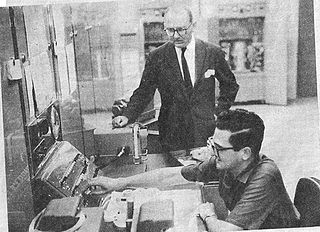
Manuel Sadosky was an Argentine mathematician, civil servant and author who was born in Buenos Aires to Jewish Russian immigrants who had fled the pogroms in Europe.

The Escuela Superior de Comercio Carlos Pellegrini is a public high school in Buenos Aires, and it is one of the most prestigious in Argentina and Latin America.
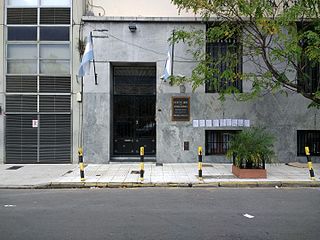
The Instituto Libre de Segunda Enseñanza is a high school that depends on the Universidad de Buenos Aires (UBA). It has approximately 1000 students, and it is located in Libertad 555 street, Capital Federal, Buenos Aires, Argentina. As it is affiliated with the University, it has an admission process that lasts one year and consists of an admission course, which involves multiple exams in Mathematics, History, Language and Geography. Almost all of its faculty teaches in the UBA, and physical education used to be performed at the Universidad de Buenos Aires campus, in Ciudad Universitaria, until 2016. One of its characteristics is that there is no need to do the CBC, because it offers its students the possibility of attending an extra 6th year in the career they have chosen.
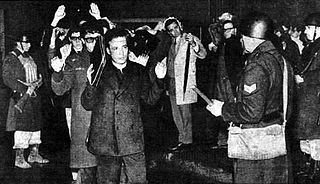
La Noche de los Bastones Largos was the violent dislodging of students and teachers from five academic faculties of the University of Buenos Aires (UBA), by the Federal Argentine Police, on July 29, 1966. The academic faculties had been occupied by the students, professors, and graduates who opposed the political intervention by the military government of General Juan Carlos Onganía to unilaterally revoke the academic freedom established in the 1918 university reform.

Eduardo Daniel Sontag is an Argentine-American mathematician, and distinguished university professor at Northeastern University, who works in the fields control theory, dynamical systems, systems molecular biology, cancer and immunology, theoretical computer science, neural networks, and computational biology.
Miguel Ángel Virasoro was an Argentine mathematician and theoretical physicist. Virasoro worked in Argentina, Israel, the United States, and France, but he spent most of his professional career in Italy at La Sapienza University of Rome. He shared a name with his father, the philosopher Miguel Ángel Virasoro. He was known for his foundational work in string theory, the study of spin glasses, and his research in other areas of mathematical and statistical physics. The Virasoro–Shapiro amplitude, the Virasoro algebra, the super Virasoro algebra, the Virasoro vertex operator algebra, the Virasoro group, the Virasoro conjecture, the Virasoro conformal block, and the Virasoro minimal model are all named after him.
The College of Arts and Sciences (CAS) is one of the eleven degree-granting units of the University of the Philippines Los Baños. It is the largest college in University of the Philippines System which offers most of the general education subjects required of UPLB students, as well as the highest number of degree programs in the University. The Philippines' Commission on Higher Education has recognized CAS as a Center of Excellence in Biology, Chemistry, Information Technology and Mathematics, as well as a Center of Development in Physics and Statistics.

The University Center of Exact Sciences and Engineering (CUCEI) is the entity from the University of Guadalajara in Mexico which focuses in the fields of engineering, physical sciences, chemistry and mathematics. The CUCEI currently serves 14,581 students in 18 undergraduate and 18 postgraduate programs. It also has 216 researchers of the National System of Researchers (SNI) and 380 professors with recognition from the Teacher Professional Development Program (PRODEP).
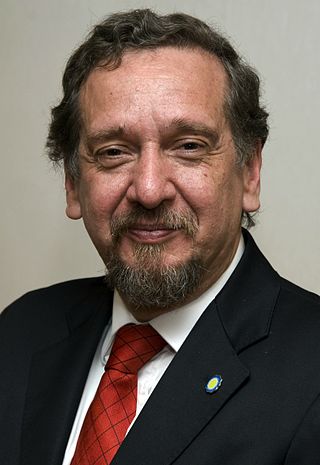
Lino Barañao is an Argentine chemist and politician. He was Minister of Science, Technology and Innovative Production of Argentina under President Mauricio Macri. He also served the same position under former president Cristina Fernández de Kirchner.
Leopoldo Máximo Falicov was an Argentine theoretical physicist, specializing in the theory of condensed matter physics.

Faculty of Science is a faculty of the University of Zagreb that comprises seven departments - biology, physics, chemistry, mathematics, geophysics, geography and geology. The Faculty has 288 full professors, associate and assistant professors, 180 junior researchers and about 6000 students.

Alicia Dickenstein is an Argentine mathematician known for her work on algebraic geometry, particularly toric geometry, tropical geometry, and their applications to biological systems. She is a full professor at the University of Buenos Aires, a 2019 Fellow of the American Mathematical Society, a former vice-president of the International Mathematical Union (2015–2018), and a 2015 recipient of The World Academy of Sciences prize.
Poper Scientific Stand Up is the first Latin American stand-up comedy group that is engaged in the popularization of science. It is an independent continuation of an early 2015 initiative by Diego Golombek, which was made in conjunction with the Ministry of Science, Technology and Innovation, Tecnopolis and TECtv. The proposal was to invite university students and graduates of different science fields to participate in a Scientific Stand Up comedy course given by renowned humorist Diego Wainstein, for them to create monologues with scientific content. Using the Stand Up format as a resource, they speak about scientific topics to all age groups, whether they have previous knowledge or not, and they also talk about scientists as people and about the perception of science in society. The name "Poper" is a pun on the initials of "Popularización Entre Risas", and a tribute to Epistemologist Karl Popper.
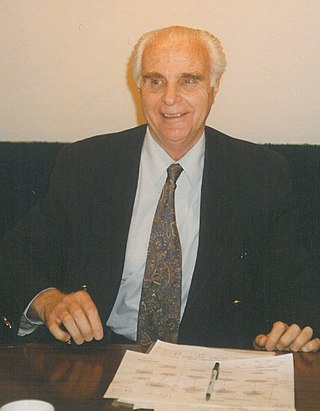
Carlos Alberto Mallmann was an Argentine mathematical physicist, professor and researcher, considered one of the pioneers of physics and nuclear energy in Argentina.

The Institute of Physicochemistry of Materials, Environment and Energy is a chemistry research centre with double dependence shared among the University of Buenos Aires (UBA) and Argentina's national research council CONICET. It is located at the Faculty of Exact and Natural Sciences Pabellón II building, in the Ciudad Universitaria complex.

The Faculty of Architecture, Design and Urbanism is a faculty of the University of Buenos Aires (UBA), the largest university in Argentina. Established in 1901 as the School of Architecture, it has since expanded to impart courses on graphic design and urbanism.

Ciudad Universitaria is an urban campus of the University of Buenos Aires, the largest and most prestigious university in Argentina. Originally designed as a potential centralized campus for all of the university's facilities, nowadays it only houses two of its thirteen faculties: the Faculty of Architecture, Design and Urbanism and the Faculty of Exact and Natural Sciences, as well as a number of dependent institutes and a sports center.
Valeria Paula Molinero is an Argentinian physicist who is the Jack and Peg Simons Endowed Professor of Theoretical Chemistry at the University of Utah. Her research investigates the simulation of the behavior of materials. She was awarded the American Physical Society Irving Langmuir Award in Chemical Physics in 2023.
Emma Victoria Pérez Ferreira was an Argentine physicist who contributed immensely to the advancement of science in Argentina. She was the first female president of the country's National Atomic Energy Commission (CNEA).


















